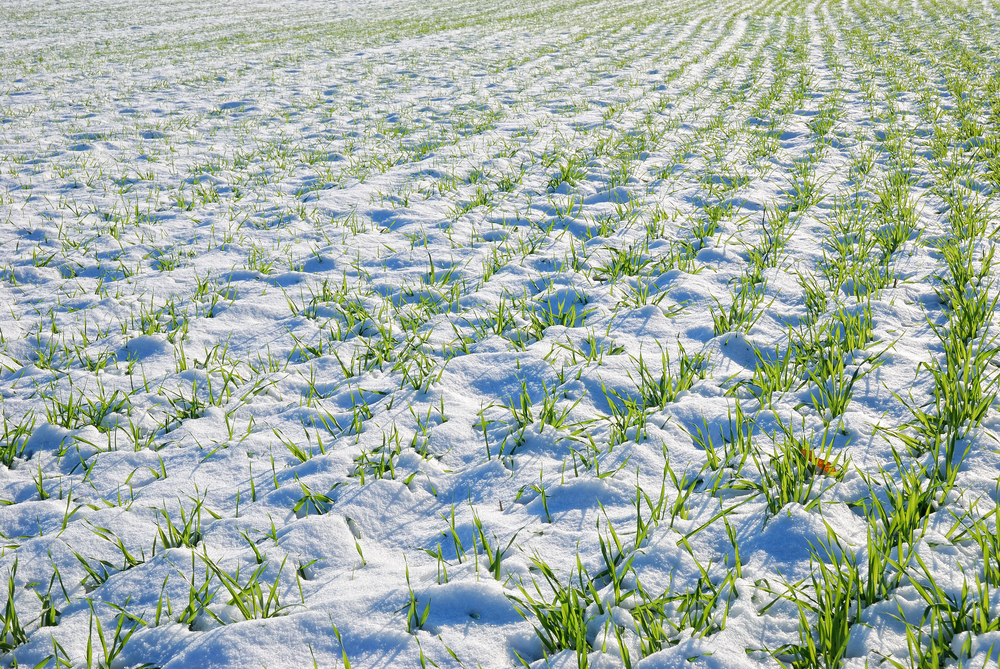Planting Wheat In The Fall

YOU PLANT WHEAT IN THE FALL? IT DOESN’T DIE WHEN IT GETS BELOW ZERO?
I get that a lot, especially from other wheat farmers from the northern plains states and Canada. The truth is, sometimes it does die. It does not happen often, but often enough that we worry about it every winter, and today as the snow is rapidly leaving, it is on every wheat farmer’s mind.
We recently experienced a week of bitter, sub-zero weather, but everything was well covered by an insulating blanket of snow. The drifting winds can scour patches bare, leaving the small plants completely exposed, but we had not had any of those normal winds when the cold hit.
Now, it has warmed and as I look out at the rapidly melting snow cover, I can see that it has turned from white to gray in the bottom of the little swale in the hillside out my window. The gray, is water soaked snow. Water released from the still-white melting snow on the hillsides above it, is flowing downhill on top of the frozen soil surface beneath the snow until, in the bottom where gravity collects it, it saturates the snow clear to the surface. I am looking at a river of slush.
None of that water is penetrating the frozen surface. None of it will be captured by the soil. None of it will be available to supply those growing plants next spring and early summer. None of it will grow wheat.
Assuming, of course, that the wheat, which will soon be totally exposed to the cruel cold and drying winds, survives the winter. Chances are slim that it has been damaged so far, but it is a long time till spring, and it will be much discussed in farmer coffee shop gatherings all over the country by then. They say the crop dies in the coffee shop at least a dozen times before spring, and as I always say, “there is still plenty of time for it to die.”
